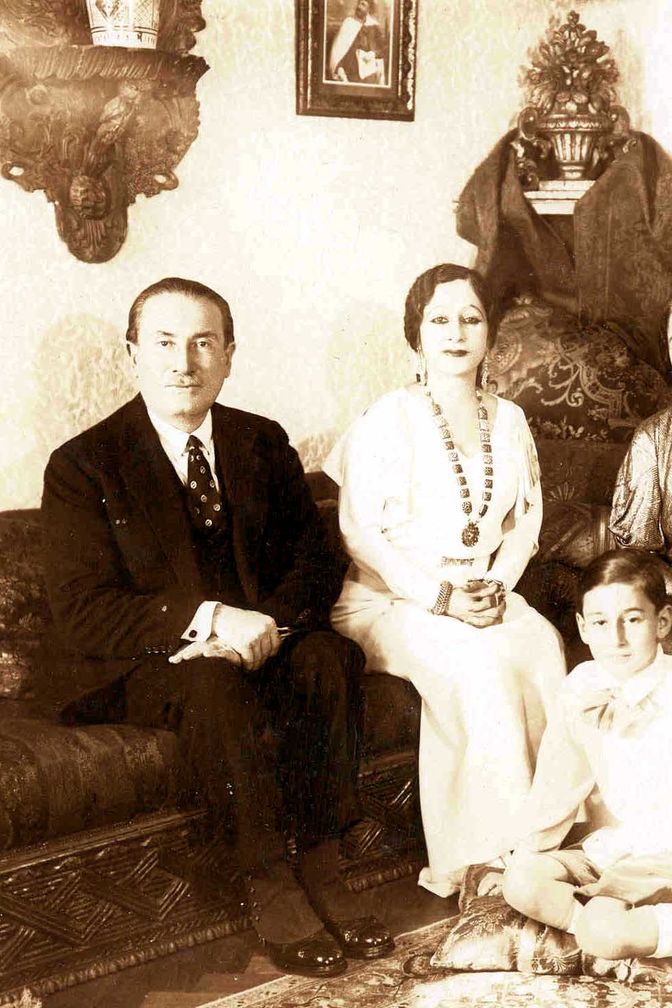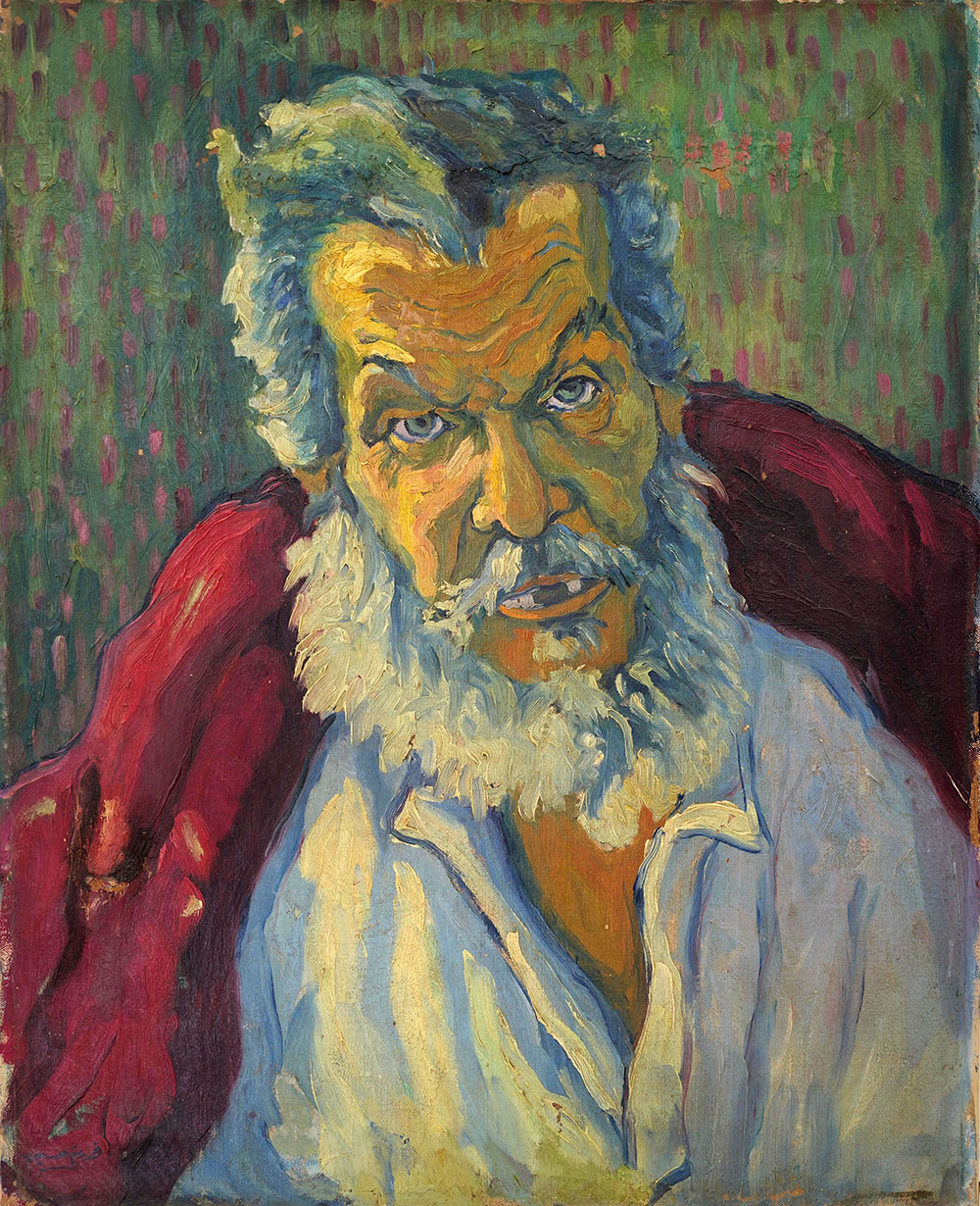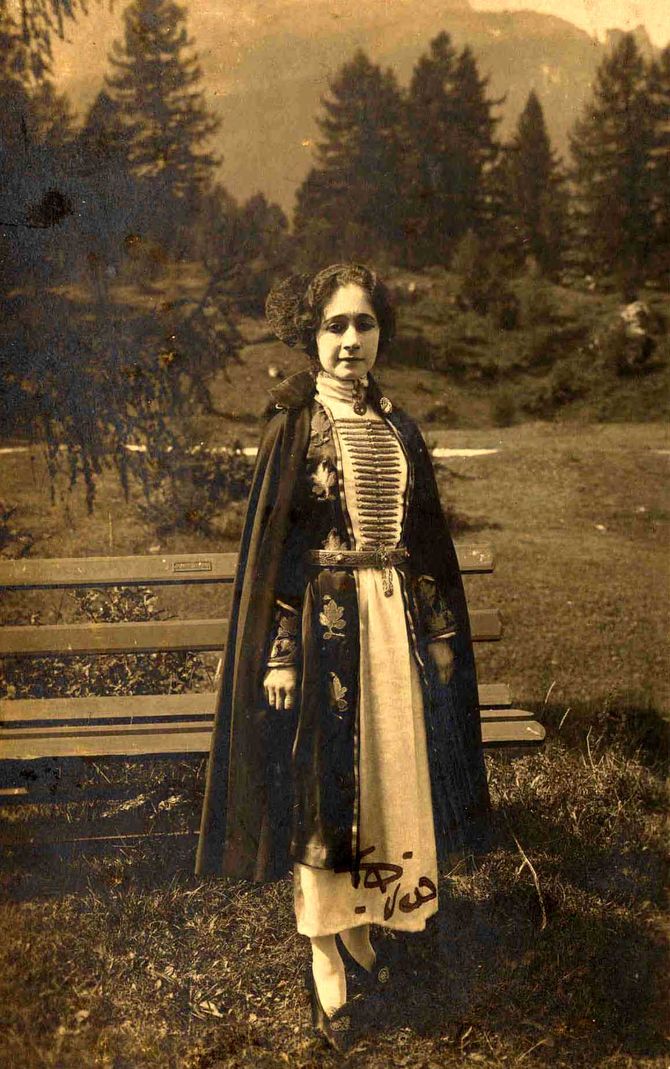Kadria Hussein (1888-1955) was a painter and a member of Egypt’s royal family, having earned a reputation during her lifetime as a writer, translator and advocate for women’s rights. Her work, however, remains largely undocumented, and her legacy merits further research.
Sultan Sooud al Qassemi
In the modern Arab world, where archives and memory are both politicized and chaotic, due to frequent regime upheaval and institutional collapse in the course of the 20th century, it comes as no surprise that there are many modern artists who remain virtually anonymous, particularly women. In recent decades, historical documents and artworks have emerged from private collections that shed light on the lives of Egyptian women artists such as Inji Aflatoun or Marguerite Nakhla that would be otherwise little known.
It is therefore surprising that the work of Kadria Hussein (1888-1955), a painter and member of Egypt’s royal family, the granddaughter of Ismail Pasha, the Khedive of Egypt until 1879, wasn’t better recognized, considering that she earned a reputation during her lifetime as a writer, translator and advocate for women’s rights. It was in fact her Khedive grandfather, who laid the foundation for the Museum of Islamic Art in Cairo, in 1859.

Kadria Hussein was born in Cairo in 1888 as the daughter of Prince, later Sultan, Hussein Kamel who ruled Egypt as a Sultan between 1914 and 1917. Her mother, Sultana Melek Tourhan, and the Sultan’s second wife, would remain influential in the country long after his death and until the abolition of the monarchy in 1952. Hussein’s first marriage in 1919 to Celaleddin Sırrı Bey was short-lived, but it was during her second marriage in 1921 to the industrialist and influential politician Mahmoud Khairy Pasha (1884-1957) in Emirgan, on the shores of Istanbul’s Bosphorus, that she became a prominent figure in political and literary circles in Egypt and the newly founded Republic of Turkey.
The newlyweds settled in Tarabya, then a wealthy suburb of Istanbul, and acquired the 19th century Huber Mansion (Hussein bequeathed it to a Christian school upon their departure from Turkey but it was expropriated in 1985 and it is now in the hands of the Turkish presidency). From there, they became household names in Turkish politics: Mahmoud Khairy Pasha and Kadria Hussein were strong supporters of Turkey during the War of Independence, donated significant amounts of money to the war effort against Greece for the purchase of a plane from Italy (stories abound that she asked for the plane to be named after her) and were personal guests of Mustafa Kemal Atatürk in Ankara. This journey resulted in Kadria Hussein’s book Lettres d’Angora la Sainte that covered the contemporary events in Turkish history from a first-person point of view, in which she defended Turkish rights and sovereignty.
Her lasting presence in Turkey comes, as a matter of fact, from the world of literature. Even before her arrival in Istanbul, she was regarded as a key figure in Turkish-language letters in Egypt. In her twenties and while living in Cairo, Princess Kadria contributed to the radical Turkish magazine Şehbâl, published between 1909 and 1914, writing about politics and women’s rights, and she translated many works of literature from European languages into Turkish. Other publications that Princess Kadria contributed to include Resimli Kitap (The Illustrated Book), which was published between 1908 and 1913; Mihrab, a philosophical magazine which was published for 15 years before ceasing in 1925; the women’s monthly magazine L’Égyptienne that ran between 1925 and 1940; and the francophone literary periodical published between 1938-1961, La Revue du Caire. Throughout her life Princess Kadria published at least five books, including two extended volumes on prominent women in Islamic history, released in Arabic in 1924, in addition to a collection of thoughts by the name of El Sarab or The Mirage in 1919. She returned to Egypt in 1930 when King Fuad, her uncle, ordered members of the royal family living abroad to return to Egypt.
But far less is known about her artistic education and endeavors, to the point that her role as a painter is completely absent from the extensive accounts published in Turkey throughout the past century about her literary work. Although Kadria Hussein came of age in 1908 with the establishment of the Egyptian School of Fine Arts, which graduated the country’s first sculptor Mahmoud Mokhtar (1891-1934), she was not allowed to enroll, as it did not accept women at the time and it was the custom for members of the royal household to be schooled at home. It was only with the opening of the Higher Institute of Fine Arts for Women Teachers in 1939 that women including Menhat Helmy (1925-2004) were able to receive higher education in fine arts. Prior to that, pioneering women like Amy Nimr (1898-1974) studied abroad in Europe. Notable private tutors included Ashod Zorian (1905-1970) who trained artists Eliz Partam (1930-2007), Laila Ezzat (b. 1933) and Egypt’s Queen Farida (1921-1988) whose work focused on landscapes and natural life. Nevertheless, Princess Kadria’s father Sultan Hussein encouraged his daughters to travel to Europe, and he appointed historian and cabinet secretary Ahmad Zaki Pasha[1] (1867-1934) as an artistic mentor to his daughter Princess Kadria.
Princess Kadria’s sister Samiha (1889-1984) participated in the inaugural exhibition of the Société des Amis de l’Art in Cairo that was inaugurated on April 15, 1921 by Prince Youssef Kamal, which would mark her first artistic appearance.[2] It was around this time that Kadria Hussein traveled to Istanbul with her husband and discovered her talents as a journalist, writer, and painter, arriving in a country in turmoil following the collapse of the Ottoman Empire and the birth of the Turkish Republic.
Princess Kadria and Mahmoud Khairy Pasha were also renowned collectors of art and Islamic antiquities. A photo from a 1946 edition of Al Musawar magazine taken in Khairy Pasha’s summer residency in Tanash near Cairo, displays a living room adorned with paintings, including one of her own, and artefacts from the Islamic period, including swords, vases, weapons and books that according to the magazine, they collected during her and her husband’s travels across Europe and the USA. The mansion and the artefacts were seized by the Revolutionary Command Council of the Republic of Egypt, following the dissolution of the monarchy, and sold at auction, after the Egyptian Revolution of 1952. While not much is known of the content and whereabouts of Princess Kadria’s artworks today, the late Egyptian historian Muhammed Gwady states that she had painted natural landscapes of Egypt, Türkiye and France in classical realist style, as well as produced a number of sculptures.

Princess Kadria’s last known appearance at an art exhibition in Egypt was at the Society of Graduates of the College of Fine Arts at the Cairo Municipality in May 1961, six years after her death in Cairo. It remains unclear why her work was included in the exhibition, given that she was not a graduate of the college. The same painting that appears in the 1961 exhibition, The Spiritual Queen Isa (undated), has been recently acquired by Sharjah’s Barjeel Art Foundation, as part of its mission to collect at least one work from every distinguished modern painter from the Arab world, with a particular emphasis on women, and perhaps the only work by Hussein held at an art institution today. The small painting depicts an elderly female figure dressed in white, and adorned by a large, ornamented green shroud, with an elaborately-crafted headdress. The lower part of her face is masked, while the embroidered patterns on her cloak and her headdress recall spiritual symbols and trinkets. Although its unknown who Princess Kadria Hussein trained under, it is clear that she engaged with subjects that are not usually reflective of a royal upbringing, often portraying the downtrodden and the outcast. Painting a spiritual healer, too, is unlikely to have been a common topic amongst the royal household, as it involves an inquiry into unconventional mythology, shamanism, and an embrace of the paranormal.
Another work that was recently acquired by the Barjeel Art Foundation is an untitled painting of a bearded man. He looks ragged and worn, while his front teeth are missing, and his forehead is lined. The man looks like he leads a tough life, defined by manual labor and toiling for survival. While it is unknown where the artwork was created, it seems unlikely that a man of his stature would have been encountered in the royal social circles that the artist had belonged to. The only other currently-known work by Kadria appears in the aforementioned 1946 issue of Al-Musawir Magazine, depicting an almost life-size woman in an elaborate dress and tiara, sat on a chair in a luxuriously decorated interior.
For the past few decades, the celebrated painter Fahrelnissa Zeid (1901–1991), born into an aristocratic family on the island of Büyükada in Istanbul and herself a member of the Jordanian royal family through marriage, was seen as an important bridge between the cultures of Turkey and the Arab world. During her lifetime Zeid contributed greatly to the development of art in Jordan through the establishment in 1976 of the Royal National Jordanian Institute Fahrelnissa Zeid of Fine Arts that trained prominent women artists from the country, including Suha Shoman, Hind Nasser and Ufemia Rizk. Zeid belonged to a prominent artistic family, and her sister Aliye Berger, is also considered a major figure in modern Turkish painting. But Fahrelnissa Zeid is everything but forgotten. Her work has been exhibited worldwide, acquired by major collections in Europe and it was the subject of a large retrospective at Tate Modern in 2017.

Through her art and scholarship, Kadria Hussein, however, was in her own way also an important bridge between Turkey and the Arab world, contributing to the artistic, cultural and intellectual milieu in both her native Egypt and Turkey in the first half of the 20th century. During the years that she lived in Istanbul, she made a profound impression on the political and cultural establishment in the country, to the point that Atatürk himself commissioned in 1922 a Turkish translation of her book Lettres d’Angora la Sainte, richly illustrated with drawings by Izmir-born Italian painter Vittorio Pisano. Although Egypt witnessed the emergence of a number of prominent women intellectuals during the republican period, including May Ziade (1886-1941) and Huda Shaarawi (1879-1947), few were able to simultaneously attain prominence in multiple countries, writing in different languages. The cosmopolitan world of late Ottoman society that disappeared with women like Kadria Hussein has vanished forever, and in her case, unfortunately, also the chronological sequence of her artistic output, in spite of her monumental literary legacy.
In many ways Kadria Hussein’s intellectual achievements mirrored that of other leading female activists and thinkers of her generation, whether it was in the field of women’s empowerment, literature or art. In fact, some of her most meaningful literary contributions materialized incognito, while writing under different pen names, or abroad in Turkey and different European capitals, while her father was the sovereign of the Sultanate of Egypt.
In 1916 the poet Najib Mitri (1865-1928), founder of Dār al-Ma’ārif publishing house, wrote that Princess Kadria is “a girl who is not distracted by global prestige and material wealth from the wealth of thought and the power of thinking.” Her legacy remains still incomplete in the absence of a fuller inventory of her paintings and sculptures, to go alongside her enormous literary estate, but it is entirely possible that with the curiosity of scholars and the support of institutions, more details about her illustrious life and prolific career will emerge out of historical archives and private collections in the future, to complete the picture of a life lived in a moment of great risk, change and possibility.
[1] ذكرى الشاعرين شاعر النيل وأمير الشعراء. Page 334
[2] IBRAHIM Mai, Independant Arabia, جمعية محبي الفنون الجميلة… 100 عام من الإبداع في مصر, 1 January 2023.




